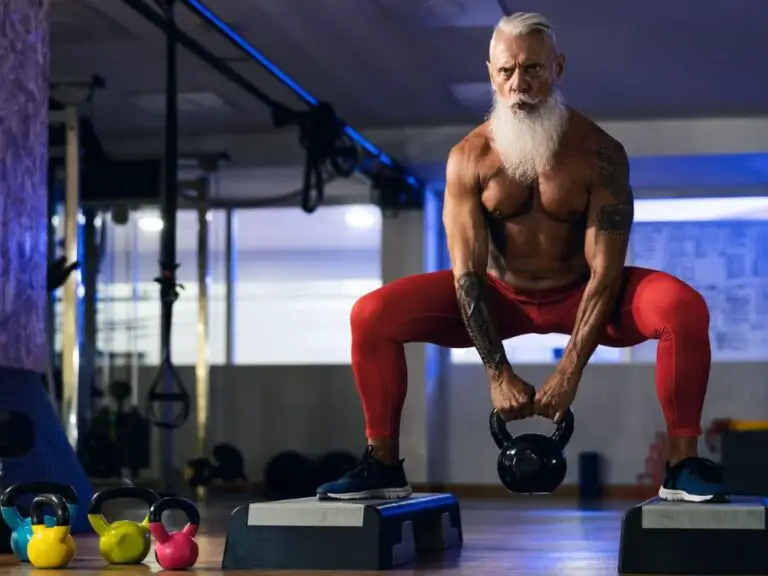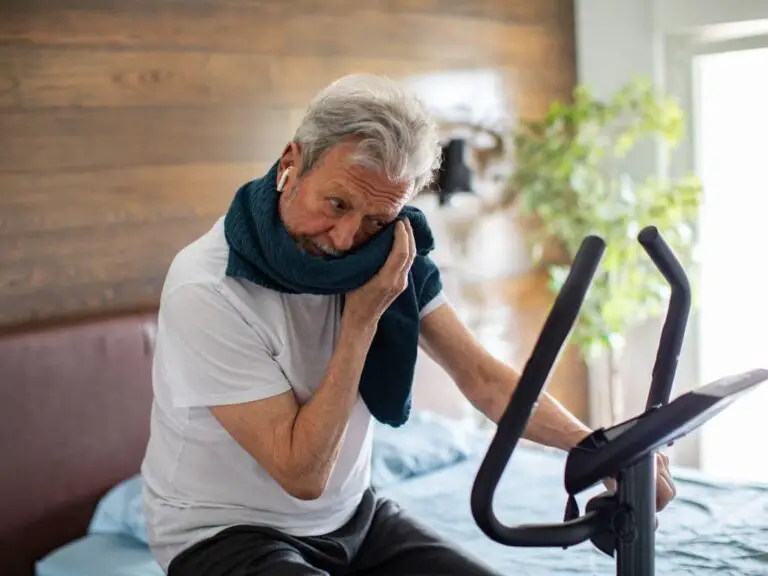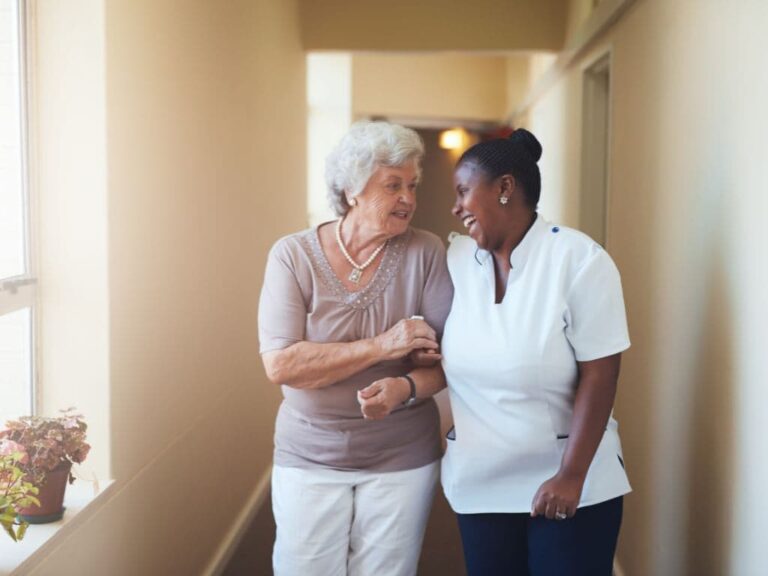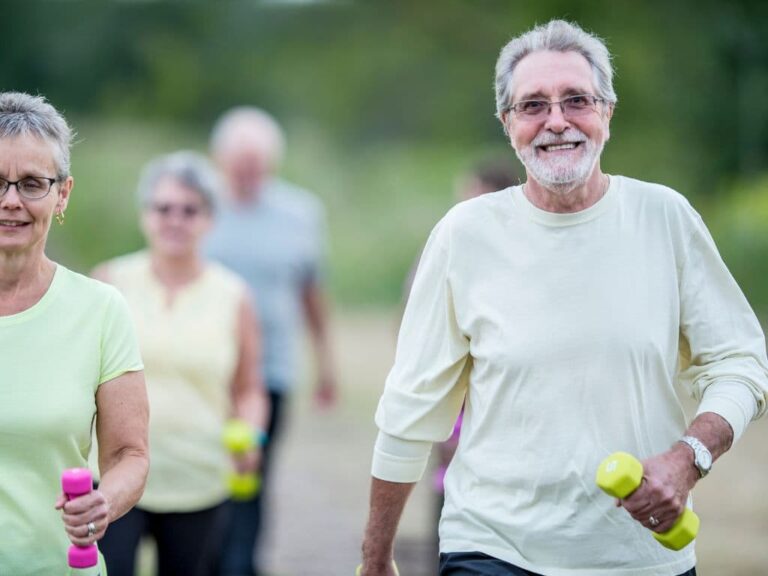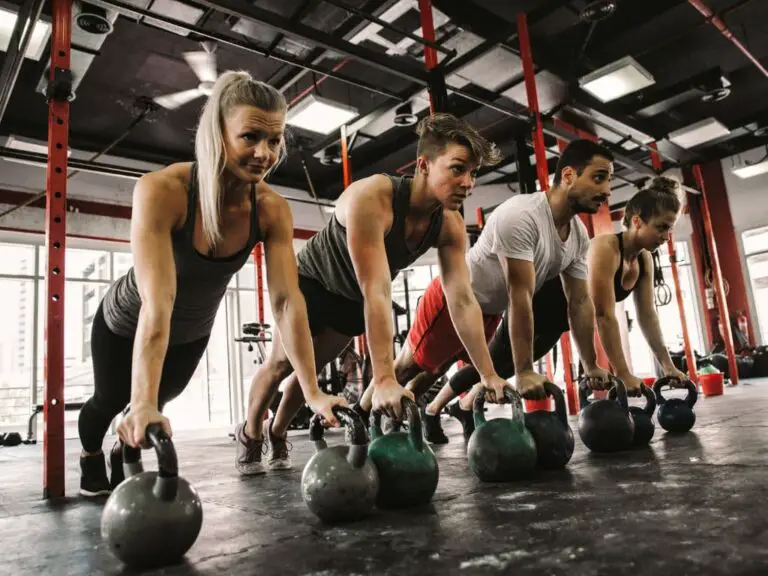Improving Balance for Seniors: Exercises, Tips, and Safety Measures
Balance is one of the most important yet often overlooked aspects of health, especially as we age. Maintaining good balance helps seniors stay independent and reduces the risk of dangerous falls. But why exactly is balance so critical for the senior population? And what can seniors do to actively improve their balance, stability and coordination?
Balance can be improved at any age through targeted exercises, lifestyle changes, and professional help. Regular aerobic exercise, strength training, yoga, Tai Chi, and physical therapy are effective methods. Maintaining a healthy diet and hydration, regular vision check-ups, medication review, and using assistive devices can significantly enhance balance and coordination.
This article will explore the significance of balance exercises for older adults and provide actionable tips to strengthen equilibrium, prevent tumbles, and boost confidence.
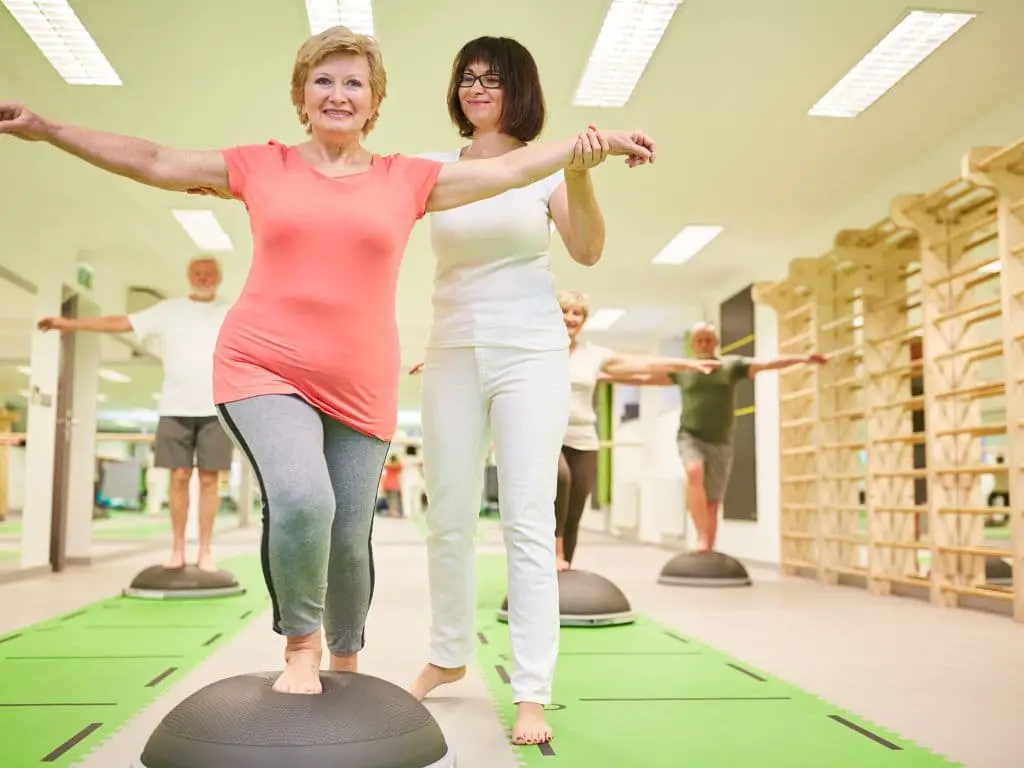
Why Is Balance Important for Seniors?
Balance is our ability to maintain control of our body’s position, whether we are moving or remaining still. It involves the complex coordination of multiple systems, including our muscles, bones, joints, vision, inner ear, and brain. As we grow older, these systems naturally deteriorate, which can severely impact balance. Age-related decline in equilibrium is a major contributor to mobility issues and fall risks in seniors.
Falls lead to serious injuries and are the leading cause of both fatal and nonfatal traumas in older adults. According to the CDC, one-fourth of seniors fall each year in the US, resulting in over 36 million falls. These alarming statistics highlight why maintaining and improving balance should be a top priority. With a strong sense of stability, seniors can confidently perform daily activities, live independently for longer, and avoid crippling mishaps.
What Factors Affect Balance in Seniors?
Several interrelated elements influence balance and coordination as we age. These include:
Muscle strength: Weak lower body muscles reduce stability. Loss of muscle mass is common as we get older.
Flexibility: Tight muscles and joints restrict range of motion needed for balance.
Proprioception: This refers to body awareness, which diminishes over time.
Vision: Age-related vision problems make it harder to orient oneself.
Inner ear function: The inner ear is crucial for spatial orientation, and functionality declines with age.
Chronic conditions: Issues like arthritis, diabetes, and heart disease affect mobility.
Medications: Side effects of many common meds include dizziness and instability.
Cognition: Dementia and other age-related cognitive declines can make it harder to maintain balance.
Physical activity: Being sedentary leads to faster deterioration of balance and coordination.
As seniors experience multiple effects of aging, all these interrelated factors compound stability issues and fall risks.
How Can Seniors Improve Their Balance?
The good news is that balance and coordination can be improved at any age through targeted exercises, lifestyle changes, and professional help. Here are some of the most effective ways seniors can enhance their equilibrium.
1. Regular Exercise
Engaging in regular aerobic exercise and strength training provides enormous benefits for balance as we age. Aerobic activity improves blood flow, strength, and stamina. Meanwhile, strength training combats muscle loss. Together, they enhance overall mobility and stability.
2. Yoga and Tai Chi
Special mind-body practices like yoga and Tai Chi are exceptionally helpful for seniors looking to boost balance. They combine physical activity with concentration, controlled breathing, and relaxation. Studies show Tai Chi is effective at reducing falls. The slow, focused movements challenge stability.
3. Physical Therapy
Working with a trained physical therapist allows seniors to safely perform targeted balance exercises suited to their specific needs. A PT can assess balance issues and track progress. They also ensure correct and safe technique. PT often incorporates assistive devices like rails and harnesses to prevent falls.
4. Assistive Devices
Speaking of assistive devices, mobility aids like canes and walkers provide extra support while moving. Other helpful tools include grabbers which allow picking up items from a standing position, eliminating bending. Shower chairs, railings, and raised toilet seats also minimize balance requirements inside the home.
5. Medication Review
Since medication side effects frequently contribute to equilibrium issues, having doctors review prescriptions is wise. They may be able to adjust dosages or switch to alternatives without balance-disturbing properties. Getting vision checked and updating eyeglass prescriptions also sharpens eyesight for better spatial orientation.
6. Vision Check-ups
Regular vision check-ups allow early detection and treatment of age-related eye diseases. Cataracts, glaucoma, macular degeneration and other conditions that impair sight further compromise balance. Protecting vision proactively preserves this vital sense for stability.
7. Healthy Diet and Hydration
Eating nourishing whole foods and staying hydrated is tremendously beneficial. Seniors should emphasize fruits, vegetables, lean proteins, fiber and healthy fats. Avoiding refined flour, sugar and unhealthy oils also helps. Staying hydrated with frequent, small amounts of water prevents dangerous drops in blood pressure associated with dehydration and falling.
With a proactive, multi-pronged approach, seniors can improve balance, mobility and confidence. But which specific exercises offer the most benefits?
What Are Some Effective Balance Exercises for Seniors?
Here are 10 excellent balance exercises for seniors to improve stability and prevent falls:
1. Heel-to-Toe Walk
This fundamental exercise involves walking in a straight line, placing the heel of one foot directly in front of the toes of the other foot with each step. Perform near a wall or rail for support if needed.
2. Leg Lifts
Stand behind a chair and lift one leg straight back without leaning forward. Hold briefly, then lower the leg slowly. Repeat on each side for a set number of reps based on current strength level.
3. Chair Squats
Stand with feet shoulder-width apart, arms outstretched. Slowly lower backside toward the chair without touching down, then straighten up again. Repeat for several controlled reps.
4. Back Leg Raises
Hold onto a chair or wall for support. Keeping one leg slightly bent, raise the other leg straight back, engaging the buttocks. Slowly lower. Repeat on each side.
5. Side Leg Raises
Stand behind a chair, holding on for balance. Keeping the leg straight, slowly lift it out to the side, then lower. Maintain upright posture. Repeat on each side.
6. Wall Push-ups
Facing a wall, place palms flat on the wall at shoulder height. Keeping back straight, bend elbows to bring chest toward wall, then push back. Moving slowly and controlled is key.
7. Toe Lifts
Balancing on the balls of the feet, raise heels off the ground and hold for 5-10 seconds before lowering with control. For a greater challenge, close eyes while lifting toes. Have a chair or wall nearby for support.
8. Clock Reach
Stand in place and extend arms to sides. Reach one hand forward as if pointing to the 12 on a clock face, pause and return to start. Repeat on other side. Continue “pointing” to every number on the clock.
9. Single-Leg Stance
Start by standing near a wall, chair or counter. Raise one foot slightly off the ground, hold the position for a count, then lower the foot. Gradually work up to holding for 30 seconds or more on each side.
10. Tandem Stance
Position feet in a straight line, heel to toe. Shift weight to heels, then toes, balancing for as long as possible comfortably. Over time, work up to holding the stance for over a minute.
Seniors should tailor balance exercises to their current ability and health conditions. While these activities benefit nearly everyone, those with significant mobility issues may require supervision or assistance at first. It’s always wise to consult doctors before starting a new fitness routine.
What Are Some Safety Measures for Seniors to Prevent Falls?
While balance training does wonders, seniors must also be vigilant about safety given the inherent risks. Here are some key precautions:
- Take it slow and steady with all movements to avoid dizziness. Sudden changes in position can trigger falls.
- Have a sturdy chair, cane, walker or wall nearby for support.
- Use non-slip yoga mats or wear supportive shoes with good traction. Avoid exercising in socks.
- Check that eyeglasses have the proper prescription and keep them clean.
- Remove tripping hazards like throw rugs and cords from floors.
- Install grab bars and railings in bathrooms and hallways. Use non-slip mats in tubs.
- Ensure good lighting throughout the home, especially on stairs.
- See doctors regularly to optimize health conditions and medications that affect balance.
Prioritizing safety allows seniors to progress their balance confidence, without overexerting themselves. Preventing injurious tumbles must always remain top of mind.
How Often Should Seniors Practice Balance Exercises?
Experts recommend practicing balance-strengthening exercises at least 3 days per week for 30 minutes per session. Consistency is key for making tangible improvements in equilibrium and stability. But seniors should start slowly and gradually increase activity. Trying to do too much too quickly raises injury risks.
It’s also vital to evolve balance exercises over time by adding challenges when existing activities get too easy. This continual progression keeps the vestibular system adapting. Some ways to advance a workout include closing eyes, decreasing hand support, standing on one foot, moving more dynamically, and using unstable surfaces like foam pads.
What Role Does Mental Health Play in Maintaining Balance?
Physical equilibrium relies heavily on cognitive well-being. Seniors experiencing depression, anxiety and social isolation often demonstrate poorer balance and mobility. Alternatively, having strong social connections, pursuing mentally stimulating hobbies, and maintaining a positive outlook preserve cognitive health longer.
Seeking treatment for mental health conditions via counseling, medication, social services, and community support positively influences balance abilities. Outlooks and emotions inevitably affect physical capability and independence. Seniors need robust social ties and psychological reserves to motivate ongoing engagement in healthy balance behaviors.
Conclusion
Strong balance is a vital component of health and mobility as we age. Challenging the body’s equilibrium through targeted exercises allows seniors to prolong independence, avoid dangerous falls, and confidently perform activities they enjoy. Along with routine workouts, incorporating lifestyle adjustments like vision care, home safety modifications, physical therapy, and medication management optimizes stability.
With regular practice, seniors at nearly any ability level can enhance coordination, muscle strength, flexibility and balance. But be sure to discuss any new fitness regimens with doctors, take it slow, and put safety first. With the right balance-focused plan, older adults can stay securely on their feet for years to come.
Frequently Asked Questions
-
Can balance be improved?
Walking, strength training and other workouts combined can help improve balance, particularly for older people. Walking is a great way to build strength in the lower body, which can be a key element for good balance.
-
What is the importance of balance and coordination?
Gross motor skills are more likely to cause injury than they can be done with balance and coordination. This increases the chances of the child being able to participate in sports for a longer time.
-
Why do senior citizens lose their balance?
The vestibular system is located inside the inner ear. It helps us to perceive balance. The vestibular system is connected to the brain and sends a signal to our bodies when we’re about to fall. This allows us to direct the body to corrective actions. The vestibular system’s cells age and become less effective in correcting our situation.
-
Why do elderly have balance problems?
Older adults often seek out help for balance problems. These problems are usually caused by disorders of the inner ear. One common sign is vertigo. This refers to the sensation that your surroundings or you feel like they are spinning.
-
Why are balance exercises important?
Balance exercise can prevent falls. Lower-extremity injuries such as ankle and knee injuries are less likely to occur. Proprioception, the ability to recognize where you are within space and time, is improved.
-
What affects balance?
Unsteadiness or loss of balance can be caused by Vestibular issues. An abnormality in the inner ear may cause you to feel a heavy or floating head, and also unsteadiness when it is dark. Nerve damage to your legs (peripheral neuropathy).
-
How often should I do balance exercises?
You can balance exercises every day, as well as on as many or few days as possible. Balance training should be done at least 3 times per week for older people who are susceptible to falling.
-
How does balance affect your health?
Balance and muscle coordination can naturally improve your body’s control during difficult tasks. This will translate into improved agility and faster reaction times for athletes. It also means better overall performance.
-
Why is balance exercise important for seniors?
Balance exercises are designed to increase stability and coordination in your entire body. When you are doing activities such as walking, cycling, climbing stairs or dancing, balance helps you to stay straight. Even as you age, it is important that you do balance exercises. Good balance is important to prevent injury.
-
How does exercise improve balance and coordination?
You can build strength and control in your legs and shoulders, as well as your back and core muscles. Core exercises can help you strengthen balance and make your upper body stronger by strengthening your trunk muscles.

